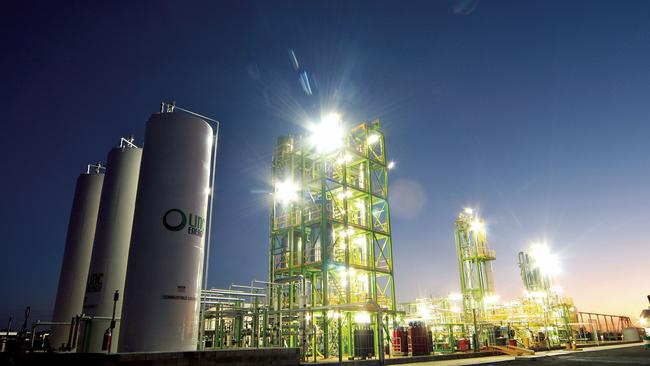Prosecutors claim Queensland miner Linc Energy leaked potentially carcinogenic gas at project near Chinchilla
A HUGE chunk of Queensland farmland has allegedly sustained irreversible contamination, capable of asphyxiating humans and animals.

QLD News
Don't miss out on the headlines from QLD News. Followed categories will be added to My News.
A 175 sq/km swathe of southern Queensland farmland has allegedly sustained irreversible, widespread contamination, some potentially carcinogenic and capable of asphyxiating humans and animals, if exposed.
In what is believed to be Australia’s biggest environmental case, Brisbane-based Linc Energy is accused of being in a “state of collective denial’’ after allegedly losing containment of gases from the underground coal gasification project near Chinchilla.
The State Government maintains the area is safe for farming and people with water and air unaffected because of the depth of the contamination.
However, the prosecution summation in the case against Linc Energy said the contamination put gases into the ground where exposure “could have an adverse effect on human and or ecological health’’.
It also said the extent of the damage was still not fully known and would cost millions to map.
Linc has been charged with five counts of causing serious environmental harm after its UCG project allegedly fractured the land around the site and spread methane, hydrogen, carbon monoxide and hydrogen sulphide. It has denied fault.
The harm is alleged to be “irreversible, of high impact and widespread’’ while workers at the site were also at times exposed to “significant concentrations’’ of gases.
“Quite simply, gas was reporting to the surface (and affecting people), but it should not have been,’’ the submission said.
In hearings last year, it was heard that staff at the site were also told to consume yoghurt and milk to avoid the nausea created by leaking gas and several suffered symptoms similar to breathing in methane. Linc said the claims were ridiculous.
One worker told the prosecution that “gravelly stuff’’ was put over a surface leak at the site known as Mr Bubbles.
“It was never going to stop the gas coming through,’’ the worker said.
Evidence in the submission from environmental consultant Nathan Zurig said that he also located BTEX compounds on and off the Linc site that were toxic and known carcinogens and at levels 100 times the acceptable level defined by Safe Work Australia.
The submissions said the contaminants do not exist naturally in concentrations found in the on-site and offsite soil.
“There is evidence of a range of contaminants present around the site in locations where they should not be,’’ the submission said
“Volatile organic compounds, in particular benzene, have no safe levels. Its presence at all is a real and well known risk. Because of the indiscriminate nature of the contamination the actions which are required to rehabilitate or restore the environment require millions of dollars to be spent.’’
Prosecutors alleged the acts or omissions of Linc representatives wilfully caused unlawful environmental harm and was reckless and or grossly negligent.
“The prosecution submits that a jury could be satisfied that the landform contamination was caused by more than just ... faulty wells.’’
A decision on whether Linc will face trial is expected in February.

FARMERS LEFT IN LIMBO
HELEN Bender’s family has been fighting the gas industry for years, but she says the community has been left in the dark about the impact of Linc Energy’s underground coal gasification project.
Shut down more than two years ago after several years of a pilot program, it has been a significant issue for the community. First it was the odours, then animals became sick.
“The department does testing but they don’t tell us the results,’’ Ms Bender said.
“That’s our biggest worry. We are impacted landholders and they are not telling us everything. What will happen to our land values and produce? Who is going to compensate?”
She said all she knew was that the surface soils were not affected.
She said the first that the community heard about the extent of the contamination came from the media.
Ms Bender’s father, George, committed suicide last year and much of the blame for his state of mind has been attributed by the family to the stress he faced arising from the battle against gas development, both CSG and UCG.
The State Government has placed a cautionary zone around the area covering about 300sq km and warned landowners to consult the Department of Environment and Heritage Protection before digging below 2m.


